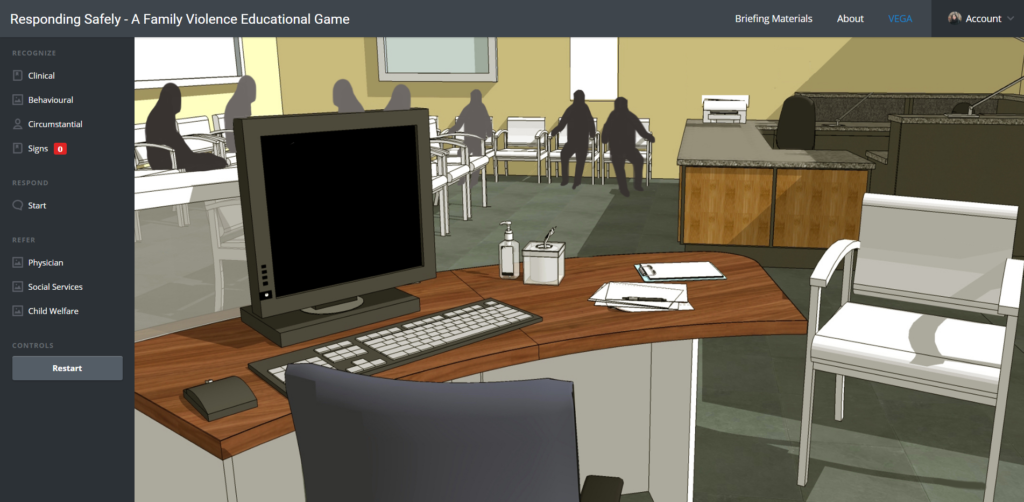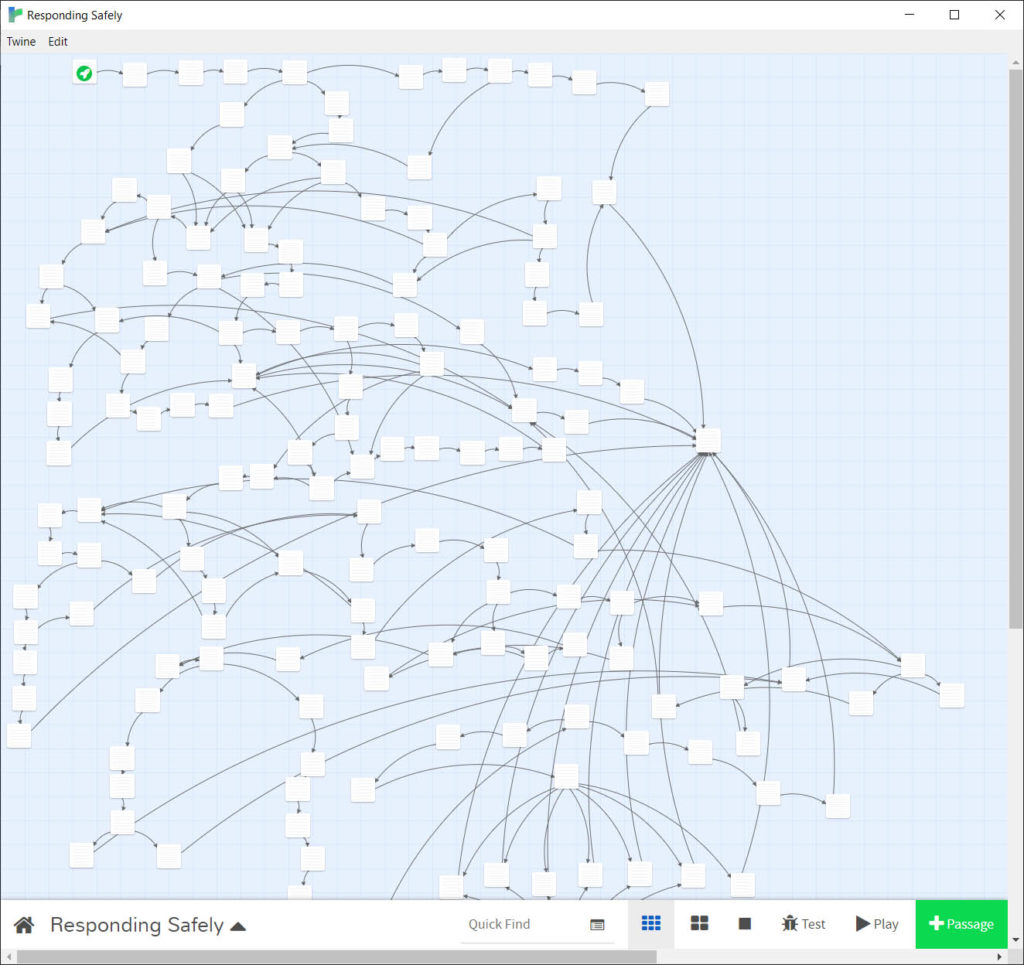In May, VEGA (Violence, Evidence, Guidance, and Action) launched their family violence educational resources through McMaster University. I had the opportunity to work with the VEGA team over a three year period to design and develop interactive modules that would assist healthcare providers in responding safely to family violence. These modules are built into the learning materials the VEGA team created and curated that will serve as a resource for healthcare and social service providers (and students).
My work on the VEGA Project involved adapting scenarios where potential signs of family violence are apparent in clinical settings. I began with a literature review of patient simulator games and interactive modules. Many seemed to emphasize finding the ‘right’ pathway through; pedagogically, this risks oversimplifying how healthcare and social service providers interact with patients, while also allowing players to ‘game’ the interface through simple trial-and-error.
So I set about designing an interface that promoted conscientious decision-making, one that couldn’t easily be ‘gamed.’ In this case, players utilize the Recognize, Respond, Refer model. The interface has signs that players need to take note of when they arise in the scenarios. The catch: not all the signs are available to players at the outset. Rather, they can review case files similar to the scenarios they’re currently playing through, noting when and where a sign was correlated with family violence. This adds the sign to the list that player’s can use in their own (simulated) practices. In this way, players cannot simply click on the interface until the find the correct pathway through; rather players take on the role of co-authors in that they co-create the interface by familiarizing themselves with the clinical signs of family violence.
This approach was further reinforced as recognizing a sign of family violence in the immediate scenario adds additional dialogue options, simulating the recognition of and the subsequent responses to a potential sign of family violence. In this way, the player needs to actively note specific behaviour or other cues in order to see a range of options that could address those issues.
I developed two prototypes, one for each of the two modules (one set in a family doctor’s office and another at a hospital triage). Twine was used to create the branching narratives, and a custom HTML page was used to handle more advance features, such as the menus for recognizing and responding safely, scenes, and characters. These prototypes went through an extensive evaluation process; they were playtested by healthcare researchers and practitioners, who offered feedback on dialogue, branches in the narrative, and outcomes. Through numerous iterations the modules were refined and the prototypes were complete.
We then joined with Stitch Media who took over the prototypes and developed commercial-quality versions, including voice acting, animations, and mobile and desktop browser support. These finalized versions are now included in the educational resources and are available to professionals and students.
About Project VEGA
The VEGA (Violence, Evidence, Guidance, Action) Project was the first project funded by the Public Health Agency of Canada (2015-2020) under the Canadian Government’s 10-year, investment to support victims of violence and their children. The VEGA team and guidance committee is comprised of researchers, practitioners, and frontline care providers from a range of professional backgrounds, including nursing, counseling, dental care, pediatrics, and psychiatry.
One of VEGA’s goals was to develop an online platform of education resources comprised of learning modules (e.g., care pathways, scripts, how-to videos), interactive educational scenarios, as well as handbook. These resources are based on a series of systematic reviews summarizing the scientific evidence. These resources will assist healthcare and social service providers (including students) in addressing the needs of those who may have experienced family violence. You can learn more about the VEGA Project here.


